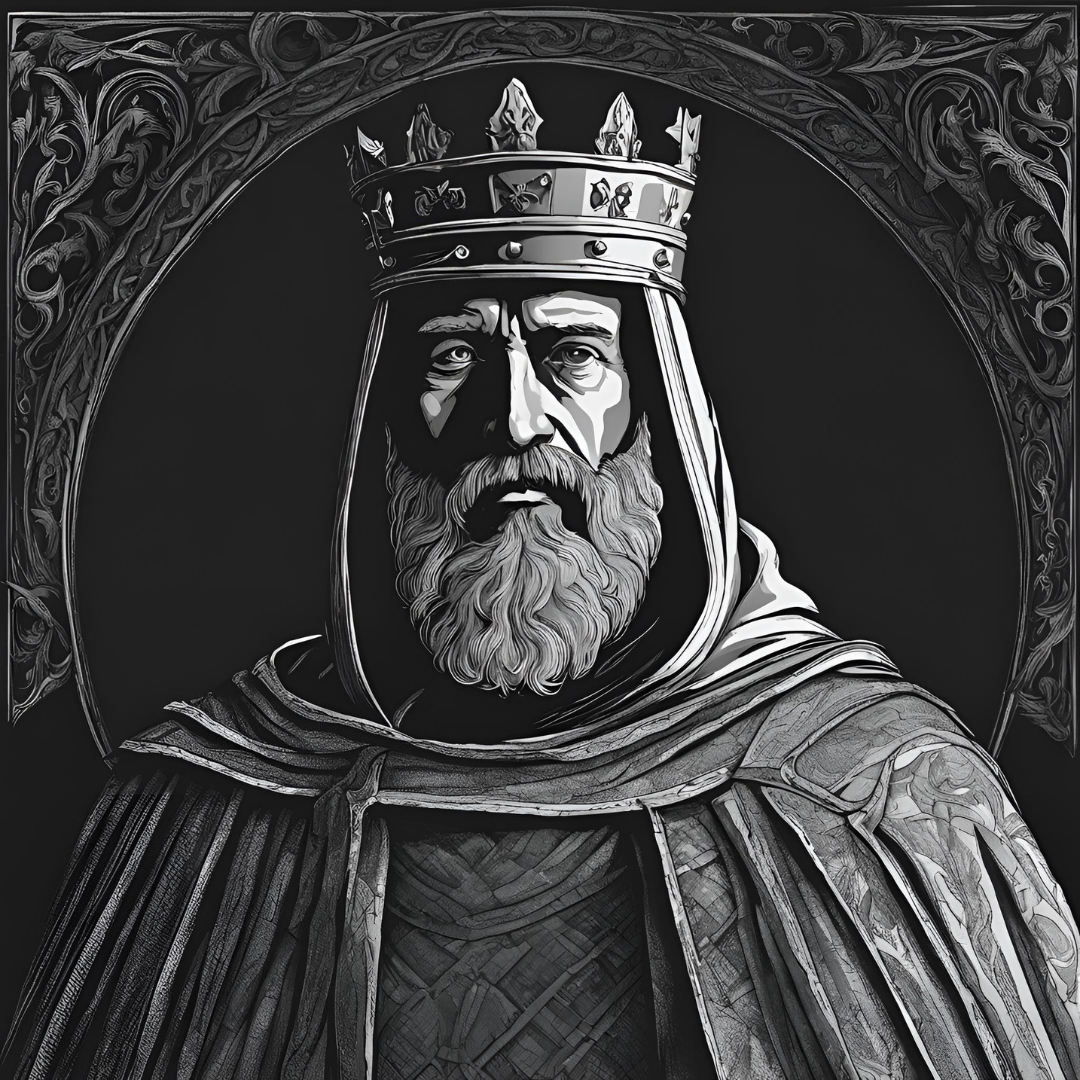Born into a noble family with both Scottish and Anglo-Norman roots, Robert the Bruce was likely raised in a politically turbulent environment. His family had claims to the Scottish throne through his grandfather, and they were initially divided in their loyalties between the English crown and the cause of Scottish independence.
In 1296, after the death of Alexander III and the subsequent struggle for the Scottish crown, Scotland fell into a period of uncertainty, with several claimants to the throne. The Bruce family’s main rival for the crown was John Balliol. After Edward I of England asserted his dominance over Scotland, Bruce initially swore fealty to Edward but later shifted to support Scottish independence.
In 1306, Robert the Bruce made his bid for the Scottish throne. After killing John Comyn, his rival for leadership of the Scottish nobility, at Greyfriars Church in Dumfries, he was crowned King of Scots at Scone on March 25, 1306. This act defied English rule and sparked a renewed phase of the Wars of Scottish Independence.
Initially, Bruce’s reign was marked by defeat and hardship. He suffered several setbacks in battles and had to flee into hiding, with much of Scotland under English control. It’s during this time that the famous story of Bruce watching a spider persistently trying to spin its web emerged. Inspired by the spider’s perseverance, Bruce resolved to continue his fight.
His luck began to turn with a series of successful guerrilla campaigns. He gradually gained control of the Scottish territories and built strong alliances with key clans. His turning point came at the Battle of Bannockburn, where he achieved a decisive victory over Edward II’s forces, solidifying his reign and Scotland’s independence.
The Battle of Bannockburn is perhaps Robert the Bruce’s greatest achievement. Despite being outnumbered, Bruce’s forces decisively defeated the English army, making it a symbolic and practical victory for Scottish independence. This battle is regarded as one of the most significant in Scottish history and a key moment in the Wars of Independence.
Bruce’s victory at Bannockburn did not bring an immediate end to the conflict. However, in 1320, the Scottish nobles sent the Declaration of Arbroath to Pope John XXII, asserting Scotland’s independence and Bruce’s rightful claim to the throne. This famous document is considered an important assertion of Scotland’s national identity and is often compared to other historical declarations of independence.
In 1328, the Treaty of Edinburgh-Northampton was signed, in which England officially recognized Scotland as an independent kingdom and Robert the Bruce as its rightful king.
Robert the Bruce ruled Scotland until his death in 1329. He worked to rebuild the country after years of war, strengthening its infrastructure and governance. His health deteriorated in his later years, and it is believed he suffered from a disease like leprosy.
Bruce died on June 7, 1329, at the age of 54. According to his wishes, his heart was removed after death and taken on a crusade by Sir James Douglas before being returned to Scotland and buried at Melrose Abbey. His body was buried at Dunfermline Abbey.
Robert the Bruce is revered as a national hero in Scotland. His efforts in securing Scotland’s independence have made him a central figure in Scottish history and folklore. Monuments such as the Bruce statue at Bannockburn and his burial place at Dunfermline are important landmarks in Scotland. His legacy is also tied closely to the broader narrative of Scotland’s independence from English rule.
The story of his perseverance, leadership, and vision has inspired generations and continues to be a key part of Scotland’s cultural identity.


